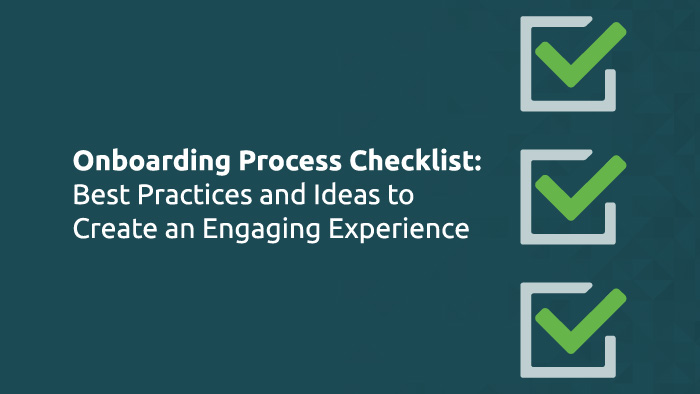Trying to ensure your organization consistently makes great hiring decisions is no cakewalk.
There are a lot of factors that should be considered for hiring the right person, so your organization needs a focused process in place to help you navigate these tricky waters.
In general, the employee selection process typically includes steps like:
- Reviewing cover letters and resumes
- Pre-hire assessments that measure knowledge, relevant skills, and motivation
- Phone interviews to screen candidates
- Exercises to see their ability with specific aspects of the role (e.g. a writing assignment)
- In-person interviews
- Completion of a candidate evaluation by the hiring manager
- Final candidate selection with HR and the hiring manager
- A verbal offer of employment to the candidate, followed by a written offer
- Reference checks and/or background checks
- Acceptance of the offer by the candidate
Some of these steps may or may not be included in your organization’s employee selection process – perhaps you aren’t concerned with things like pre-hire assessments or specific skill evaluations.
The elements of your process should help you focus on meeting the overall objectives of what you’d consider “the right person.”
Once you’ve made the hire, are you prepared to wow your new employee through the onboarding experience? Download this infographic to see how effective onboarding is done:
How to Hire the Right Person – Look at Your Goals
To be effective, a hiring process must deliver on these five goals:
1. Competent Candidates
You have jobs to fill, and you need people who can do them well, so you must make sure that they have the competencies required. There’s work that has to get done. And right now, there is no one to do it.
2. Culture Add
You want to hire people who will exhibit the values of your organization, AND help your organization to continually improve its values.
3. High Engagement
You want to hire people who will be engaged, and not just putting in the hours for a paycheck. You want them to enjoy the job they’re doing, and develop good work relationships with other coworkers. Engaged employees are more productive and more likely to stay.
4. Growth Potential
You want to hire someone who has growth potential and can drive continuous improvement—both personally, and in job processes.
5. Able to Contribute to the Organization
Finally, you want people who improve your overall organizational effectiveness, who help move your scorecard needles. This means things such as: lowering costs, increasing output, improving quality, decreasing turnover, and reducing absenteeism.
You can summarize this simply with the quintessential job description. You want people who can: do the job, improve the job, live the values, and improve themselves…
So how do you make a hiring decision that accounts for those goals?
Uncover Candidates’ Strengths
Interviewing is often a little more than an “educated guess.” It takes a professional psychologist months worth of sessions to truly understand someone.
How can you do it with a couple of conversations, and maybe a few standardized tests?
The entire interviewing system is built to reject people, not accept them. Just look at the numbers. Hundreds of people apply for a single position and only one gets it.
It quickly becomes a matter of seeing who you can cross off, no matter how small the reason is. Then you can interview the survivors, using whatever you learn there to cross off the rest.
So it’s often a matter of hiring the survivor, someone who had no apparent flaws, rather than uncovering the best person for the job.
However, many managers miss out on hiring highly talented candidates because they are only looking for weaknesses.
Instead, try to focus on uncovering candidates’ strengths, and assess what types of flaws are not a deal breaker for your team.
Deliver a Fair Hiring Decision Process
Aside from all the legal aspects of hiring, it is your responsibility to deliver an unbiased hiring process and choose the best person for the job.
Not who the manager thinks would be a good fit. Not a long-time friend. Not someone you owe a favor to.
Sometimes managers already have their mind made up before even starting the process. It’s just “a decision looking for facts.” In this case, the application and interview process is used to justify the decision, rather than to select the best candidate.
An impartial hiring process should aim to find the most qualified person among a pool of candidates.
Be Clear About What You’re Looking For
A recent study on internal hiring practices revealed a big disconnect between desirable skills and actual requirements in job descriptions.
When front-line employees asked their supervisors what they looked for in prospective candidates, the top three factors quoted were education, experience, and skills.
The supervisors were surveyed separately, and asked what they looked for in candidates. In a rational hiring system, the answers should have been the same.
But they weren’t.
The top three factors supervisors really wanted were intelligence, communication skills, and personality. There was no mention of education, experience, and/or skills.
So while job applicants were busy working on how to convey their education, experience, and skills, hiring managers were looking for someone who was sharp, could communicate, and was personable.
Unfortunately, this is true for many organizations.
The reasons candidates are turned down for positions are not always the real reasons they were rejected. Ultimately, this issue results in a delay in the hiring decision process.
The best way to ensure alignment is to include all technical, educational, and personal requirements in the job description.
Doing this will not only help candidates better prepare for the interview, but help you optimize the pre-screening process by being straightforward with the qualities you are looking for.
As the skills gap in the United States continues to grow, finding talent is getting tougher.
That’s why training your HR staff is critical to help them lead organizations and drive better business results.

